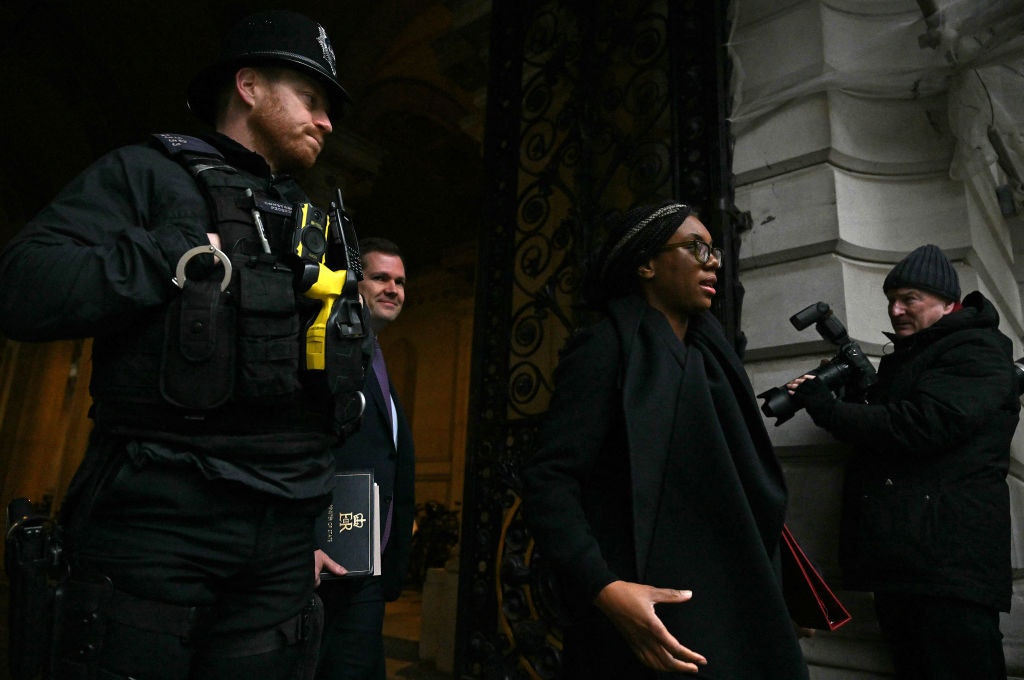The forgotten Mr Fox
The cruel sentimentality of the Hunting Act scars the countryside to this day, but the biggest loser is the animal it purported to protect
This article is taken from the August/September 2021 issue of The Critic. To get the full magazine why not subscribe? Right now we’re offering five issue for just £10.
Like most people in the countryside, I love foxes. The walls of our houses, cottage or castle, are covered in his artistic representation—Alken, Edwards and Ferneley. Our bookshelves play host to works on the Chase by Sassoon, Trollope and Surtees. Meanwhile down at the village pub, The Fox and Hounds, we drink pints of Tally Ho and try to catch the eye of the foxy new barmaid.
The fox, for countrymen and women, is much more than mere “quarry”. He is the four-legged Raffles, a gentleman cracksman, an incorrigible criminal we venerate and regard, whilst simultaneously whooping when he is killed by hounds.
RS Surtees personifies this wonderfully muddled thinking with John Jorrocks, the lead protagonist of his 1843 novel Handley Cross. Jorrocks is a cockney grocer turned Master of Foxhounds, a Georgian throw-back; port and brandy antithesis to the woke proto-Victorians who Surtees so despised. “Oh how that beautiful word, Fox, gladdens my ’eart and warms the declinin’ embers of my age,” Jorrocks lectures the great and good of the snooty spa town that gives the book its title.
In the next breath he counters this misty-eyed vulpine love with “I glories in pursuin’ him to destruction and holdin’ him above the bayin’ pack!” If you take nothing else away from what follows, believe just this: we know foxes in the countryside and we love them for it. They are not the baying vermin of your urban bins here.
I never went hunting again
After leaving the army in the early 90s, my Jorrocksian addiction to hunting led me to migrate to Leicestershire. The county’s coat of arms (motto — the huntsman’s cry of “For’ard, For’ard”), the badges of both football and county cricket teams, even the way land is farmed, are all inextricably devoted to and intertwined with foxhunting. Yet for all this reverence paid to the animal here, people still rejoiced in his death. Tell the postman, the landlord, the squire or the tractor driver you’d been out hunting that day and their standard response was “Did they kill?” Horse dealers in the Shires are as much a part of the landscape as ridge and furrow pasture or the dense fox holding coverts.
I wasn’t a particularly good horse dealer, being insufficiently ruthless as a salesman, but for all that I scraped a living and employed five grooms. When Tony Blair opened the door to Number 10, the ones in my stables began to shut. The price of good Hunters tumbled, livery clients reduced their strings or sold up completely. With the writing on the wall and a mere two years before the Hunting Act came into force, I paid off my debts to the feed merchant and farrier, laid off my last remaining members of staff and skulked home to Suffolk — my bank balance, like my heart, sternum and collar bones, broken. I never went hunting again.
The Hunting Act was the unwanted child of Lord Burns’s 2000 Inquiry into Hunting with Dogs, a report so fuzzily worded that after reading, both the Hunt Saboteurs and Masters of Foxhounds Associations claimed vindication for their standpoints. Burns did conclude that fox hunting, “seriously compromise[d] the welfare of the fox” — presumably much in the same way Christmas does for turkeys. However in clarification he went on, “naturally, people ask whether we were implying that hunting is cruel … The short answer to that question is no.”
Ignoring this, the Blair government decided they knew better and thus, after raising a middle digit to the Lords and invoking the Parliament Act, Royal assent was given and the Hunting Act 2004 was carried triumphantly out of the Commons on the shoulders of the bulging New Labour majority, leaving old Labour’s Dennis Skinner to hiss “that’s for the miners” at Tory shire backbenchers.
It’s 17 years since the Act was passed, and long past time for a review to see if anything more than class spite was accomplished. Has the fox’s welfare improved since the heirs to Jorrocks had their sport banned? I asked this question of Jim Barrington, a man better placed than most to answer it. Barrington started work for The League Against Cruel Sports in 1980, becoming their Executive Director until his resignation in 1995. He now acts as an independent animal welfare consultant.
“There has,” Jim told me, “been no evidence provided, none whatsoever, either by government or those who campaigned so vigorously for a ban, to show that the Hunting Act has achieved its aims. If anything the Act has been the single worst thing to happen to the fox. This was never about animal welfare, it was about animal rights and stopping people from going hunting.”
The Barrington view that the ban was bad for foxes seems to be supported by the mammal trends survey undertaken by the British Trust for Ornithology (BTO). This notes that while the UK fox population remained fairly stable between 2005-2011, it then plummeted by some 44 per cent. The Game and Wildlife Conservation Trust’s National Gamebag Census indicates a correlating figure, i.e. a rise in foxes recorded as shot.
The fox was loved, cosseted and protected by those who hunted him
Foxes have always been killed by gamekeepers. Before the ban most were instructed to leave sufficient foxes for the hunt, and woe betide any found disobeying the order. Frictions, sometimes downright hostility, between the hunting and shooting communities invariably involved a keeper shooting a fox that the hunt decreed was “theirs”. Yet hounds didn’t actually kill that many foxes: an estimated 20,000 per annum from a national population of a little over 370,000. The majority of the foxes the hounds did kill were the sick, the lame or the elderly. The ban immediately ended the hunting crowd’s peer pressure on shooters to control foxes with a light touch, and thus a new generation of hi-tech, hi-velocity, highly skilled fox killers emerged.
I have been a regular columnist for Shooting Times for the past six years. During that period I have noted a sharp rise in the popularity of fox shooting — it has almost become a sport in its own right, akin to deer stalking. That isn’t to say that the rise in shooting has led to the fox becoming endangered in any way. His conservation status remains, in the opinion of the Mammal Society, that of “least concern”.
What has changed, however, is his social status. When he was the hunter’s fox, he was accorded the highest rank among British wild animals — all those books, paintings, pubs and poetry were not mere window dressing: he was loved, cosseted and protected by those who hunted him. Thanks to the hunting ban he lost all that and is now regarded as no better than vermin.
Most of those who campaigned for a ban on hunting with hounds accepted, sometimes grudgingly, that the fox did require some form of lethal control. Or affected to anyway. It was hard for them to argue otherwise. The likes of the RSPB shot (and continue to shoot) countless foxes on their reserves annually. Shooting became the panacea for the pro-ban fraternity. Tootling red coated toffs would be replaced by professional faceless night-time pest controllers, who did their unpalatable dirty work, out of their sight and out of mind.
No fox, they said, would be wounded. Every fox, they insisted, would be cleanly killed. Furthermore, no one would enjoy the task. If your shooting experience only goes as far as tin cans at the fair then you’ll know that this is clearly nonsense.
Shooting foxes is difficult both in terms of the skill and equipment required and the human and financial resources needed. A skilled marksman will invariably get his fox, but miss him and he’ll become even more cunning in his night raids. If he is wounded, well, we’ve all seen Platoon.
This does leave the question hanging: why was The Hunting Act created at all? It clearly gives no added protection to the fox. As we know he can still be shot, snared and trapped in cages with impunity in any month of the year. The Burns report commissioned by the Blair government clearly stated that while hunting — like a QC with a baseball bat — compromised fox welfare, it was not in itself cruel.
Animal welfare legislation proved to be nothing more than pearl-clutching and moralising
The true answer may be provided by the man responsible for drafting not only the Hunting Act, but also all of the Government bills that preceded it, he being the barrister Daniel Greenberg CB. Greenberg reveals, “what troubled me was the fact that for the first time in my professional experience the mechanism of the law was being deployed not to further some public policy objective, but to inflict on the whole country the personal moral perspective of the 600 or so citizens who happened to find themselves in the House of Commons.”
Greenberg for the record is no galloping Silk, he’s never been hunting and doesn’t want to start now. He goes on to say “it was always clear that the Hunting Bill was not a measure aimed at advancing the public policy of animal welfare; at its best it was about morality.”
How thoroughly sad then that this piece of legislation, sold to the public as an act of animal welfare, proved to be based upon nothing more than pearl-clutching and moralising.
The Hunting Act, it turned out, was the opening skirmish by the new elite in its war against the old establishment. I, along with many others, have lost my business because of the ban. But the fox lost a lot more. From literary hero to sewer rat is no journey for such a magnificent steward of our landscape to have been forced to undertake.
Enjoying The Critic online? It's even better in print
Try five issues of Britain’s most civilised magazine for £10
Subscribe














